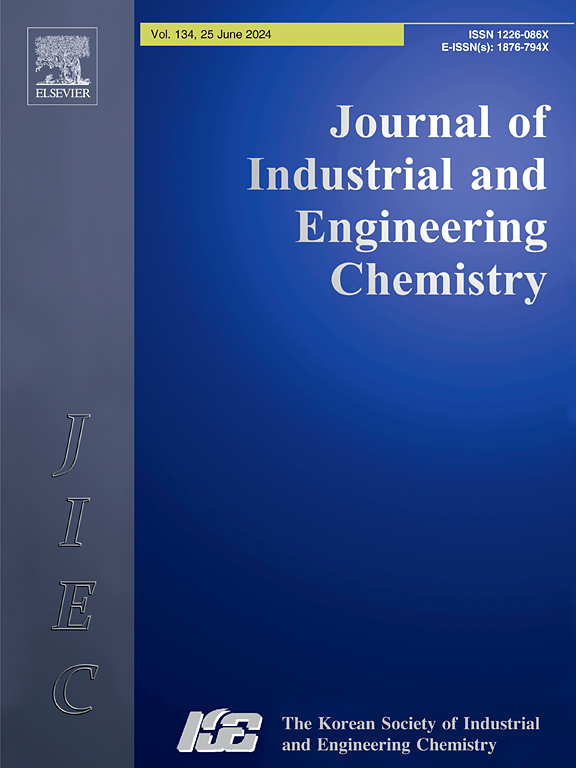Development of High-Performance Cellulose Propanoate Ester/1,2,3-Propanetriol composite Membranes: Enhancing thermal stability with transparency
IF 5.9
3区 工程技术
Q1 CHEMISTRY, MULTIDISCIPLINARY
Journal of Industrial and Engineering Chemistry
Pub Date : 2024-12-01
DOI:10.1016/j.jiec.2024.11.058
引用次数: 0
Abstract
This study presents the development of Cellulose Propanoate Ester (CP)/1,2,3-propanetriol composite membranes as a sustainable alternative to conventional Cellulose Acetate (CA)-based membranes, which typically exhibit reduced thermal stability when porous structures are introduced. The incorporation of 1,2,3-propanetriol into the CP polymer matrix resulted in significant plasticization and controlled pore formation under applied gas pressure. Gas permeance measurements revealed that the CP/1,2,3-propanetriol composite membrane, with permeability initiating at 2.5 bar, demonstrated superior mechanical strength compared to the CA/1,2,3-propanetriol composite membrane, which began permeation at just 0.6 bar. Scanning Electron Microscopy (SEM) analysis confirmed extensive pore formation in the CP membrane, achieving a porosity of 53.4 % at 3 bar. Fourier Transform Infrared Spectroscopy (FT-IR) analysis highlighted the plasticizing effect of 1,2,3-propanetriol, and Thermogravimetric Analysis (TGA) demonstrated the superior thermal stability of the CP/1,2,3-propanetriol composite membrane compared to both neat CP and CA membranes, despite increased porosity. Furthermore, the CP membrane retained its transparency, indicating that robust mechanical properties can be achieved without crystalline structure. The combination of mechanical strength, transparency, and thermal stability makes CP/1,2,3-propanetriol composite membranes a promising alternative to CA-based membranes for a range of applications.

求助全文
约1分钟内获得全文
求助全文
来源期刊
CiteScore
10.40
自引率
6.60%
发文量
639
审稿时长
29 days
期刊介绍:
Journal of Industrial and Engineering Chemistry is published monthly in English by the Korean Society of Industrial and Engineering Chemistry. JIEC brings together multidisciplinary interests in one journal and is to disseminate information on all aspects of research and development in industrial and engineering chemistry. Contributions in the form of research articles, short communications, notes and reviews are considered for publication. The editors welcome original contributions that have not been and are not to be published elsewhere. Instruction to authors and a manuscript submissions form are printed at the end of each issue. Bulk reprints of individual articles can be ordered. This publication is partially supported by Korea Research Foundation and the Korean Federation of Science and Technology Societies.

 求助内容:
求助内容: 应助结果提醒方式:
应助结果提醒方式:


